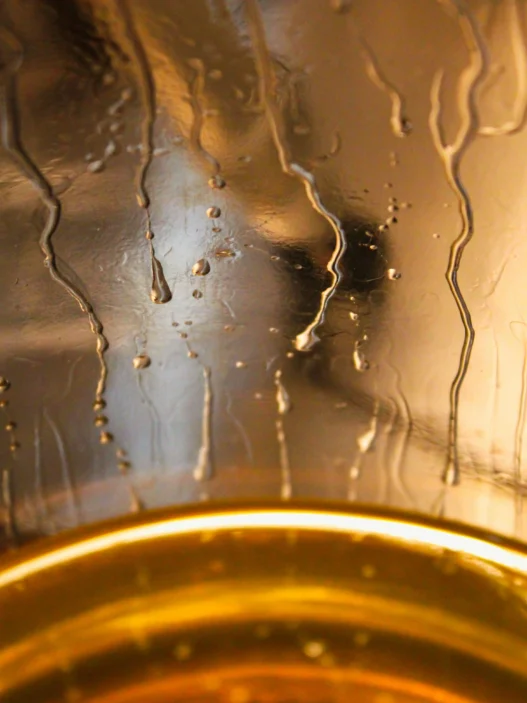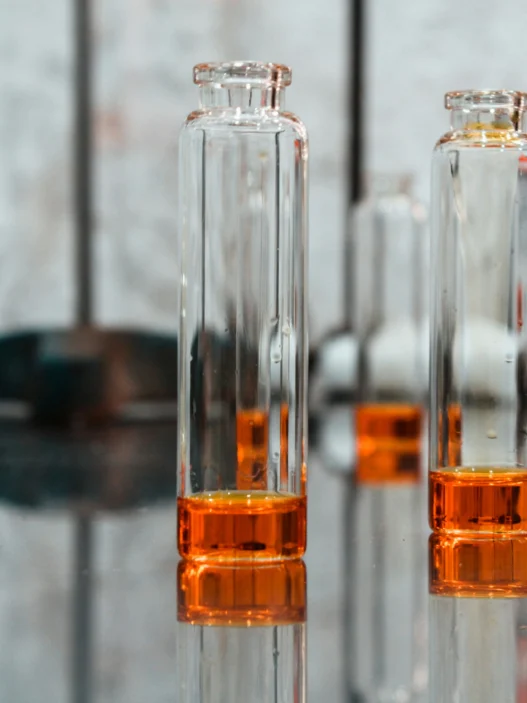Butylparaben is a chemical compound commonly used as a preservative in various consumer products, including cosmetics, pharmaceuticals, and food. Its relevance to everyday life lies in its ability to extend the shelf life of these products by inhibiting the growth of harmful microorganisms. While Butylparaben has been a subject of controversy due to its potential health risks, its widespread use underscores the importance of preservatives in maintaining product quality and safety for consumers.
Table of Contents:
- 💡 Commercial Applications
- ⚗️ Chemical & Physical Properties
- 🏭 Production & Procurement
- ⚠️ Safety Considerations
- 🔬 Potential Research Directions
- 🧪 Related Compounds
💡 Commercial Applications
Butylparaben, a type of paraben compound, is commonly used as a preservative in various commercial and industrial applications. It is often found in cosmetics, personal care products, and pharmaceuticals, where it helps extend the shelf life of products by inhibiting the growth of microorganisms.
In the pharmaceutical industry, Butylparaben is used as a preservative in drug formulations to prevent bacterial and fungal contamination. Its antimicrobial properties help maintain the effectiveness and stability of medications, particularly those in liquid or cream formulations. It is commonly found in topical ointments, creams, and eye drops.
Butylparaben is also used in industrial applications such as food processing, textiles, and paints. In food processing, it serves as a preservative to extend the shelf life of packaged foods. In textiles, it helps prevent the growth of mold and mildew on fabrics during storage and transportation. In paints, it helps inhibit the growth of bacteria and fungi, which can cause deterioration of the product over time.
⚗️ Chemical & Physical Properties
Butylparaben is a white, crystalline solid that is odorless. It is commonly used as a preservative in various cosmetic and pharmaceutical products due to its antimicrobial properties.
The molar mass of Butylparaben is approximately 194.2 g/mol, with a density of around 1.10 g/cm³. Compared to common food items, Butylparaben has a higher molar mass and density, making it more efficient in small concentrations for preservation purposes.
The melting point of Butylparaben is around 69-72°C, while the boiling point is approximately 306-307°C. Compared to common food items, Butylparaben has relatively high melting and boiling points, which contribute to its stability in various formulations.
Butylparaben is sparingly soluble in water and exhibits a low viscosity. When compared to common food items, it has lower solubility in water and lower viscosity, making it easier to incorporate into different types of products.
🏭 Production & Procurement
Butylparaben is produced through a chemical reaction involving butanol and paraben acid. This process results in the formation of Butylparaben, which is commonly used as a preservative in various cosmetic and pharmaceutical products.
Butylparaben can be procured from chemical suppliers or manufacturers specializing in preservatives. It is typically sold in powdered or liquid form and can be transported in sealed containers to ensure its stability and purity during transit.
Transportation of Butylparaben usually involves the use of sealed containers and appropriate labeling to comply with safety regulations. It is important to store and handle Butylparaben with care to prevent exposure to air or moisture, which can affect its quality and effectiveness.
⚠️ Safety Considerations
Safety considerations for Butylparaben include its potential for skin and eye irritation. It is important to handle Butylparaben with care, wearing appropriate protective equipment such as gloves and goggles. Additionally, it is advisable to work with Butylparaben in a well-ventilated area to minimize exposure to its vapors.
Hazard statements for Butylparaben include its potential for causing skin and eye irritation. It may also cause allergic skin reactions in some individuals. Ingestion or inhalation of Butylparaben may cause respiratory irritation. It is important to handle Butylparaben with caution and follow proper safety protocols to minimize the risk of exposure.
Precautionary statements for Butylparaben include avoiding skin contact and eye contact. If skin or eye contact occurs, it is recommended to rinse thoroughly with water and seek medical attention if irritation persists. It is also important to avoid ingesting or inhaling Butylparaben. Proper ventilation should be used when working with Butylparaben to minimize exposure to its vapors. Storage of Butylparaben should be in a cool, dry place away from incompatible materials.
🔬 Potential Research Directions
Potential research directions for Butylparaben include investigating its safety profile in various consumer products, as well as its potential impact on human health, particularly with long-term exposure. Additionally, researchers may explore its accumulation in the environment and its potential contribution to endocrine disruption in wildlife.
Further studies could delve into the metabolism and bioavailability of Butylparaben to better understand its behavior in the human body and its potential for bioaccumulation. In addition, research could focus on developing alternative preservatives that are more environmentally friendly and less likely to pose risks to human health.
Exploring the potential interactions between Butylparaben and other chemicals commonly found in personal care products could provide valuable insights into its overall safety and efficacy. Moreover, studies on the potential estrogenic effects of Butylparaben may shed light on its role in hormone disruption and its impact on reproductive health.
🧪 Related Compounds
One similar compound to Butylparaben based upon molecular structure is Ethylparaben. Ethylparaben has a molecular structure that is very closely related to Butylparaben, differing only in the length of the alkyl chain attached to the phenol group. Ethylparaben is commonly used as a preservative in cosmetics and pharmaceuticals for its antimicrobial properties.
Another compound with a similar molecular structure to Butylparaben is Methylparaben. Methylparaben is structurally similar to Butylparaben, with the only difference being the length of the alkyl chain attached to the phenol group. Like Butylparaben, Methylparaben is widely used as a preservative in food, pharmaceuticals, and personal care products due to its ability to inhibit the growth of bacteria and fungi.
Propylparaben is yet another compound that shares a similar molecular structure to Butylparaben. Propylparaben, like Butylparaben, is an alkyl ester of p-hydroxybenzoic acid with a propyl group attached to the phenol group. Propylparaben is commonly used as a preservative in cosmetics, pharmaceuticals, and food products due to its ability to prevent microbial growth and extend the shelf life of these products.





